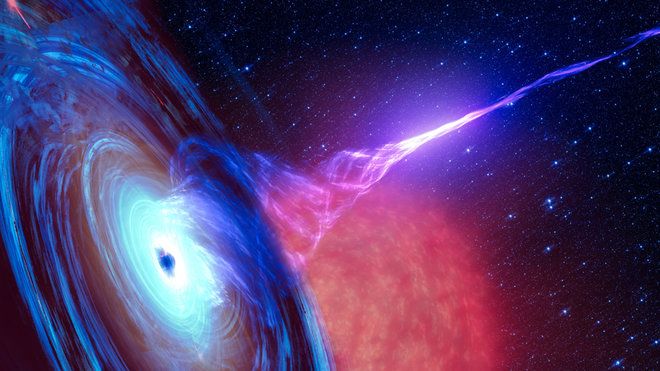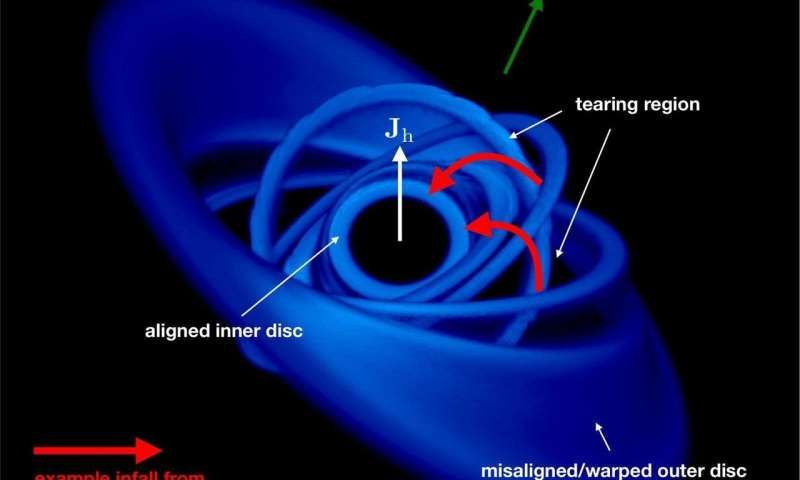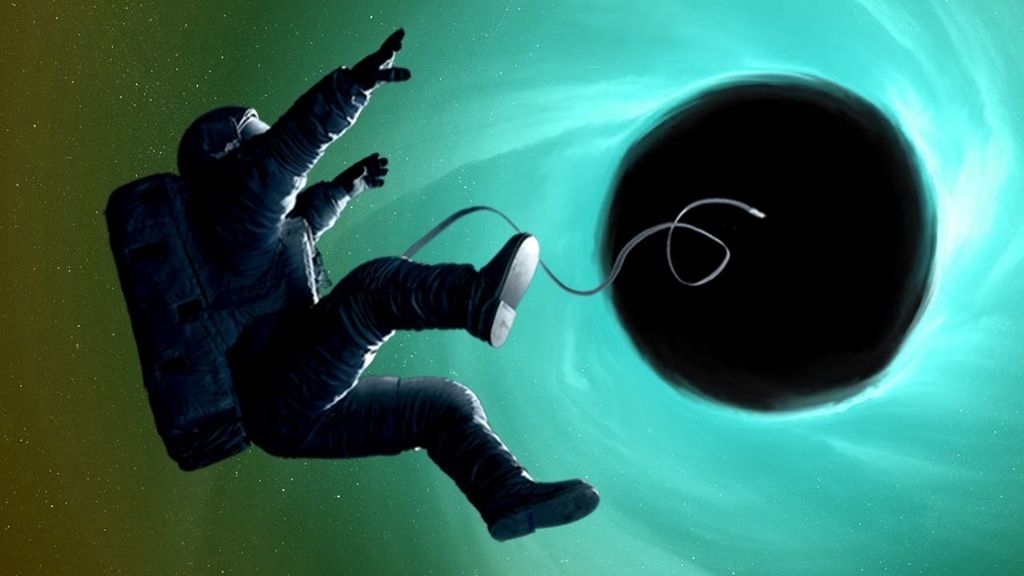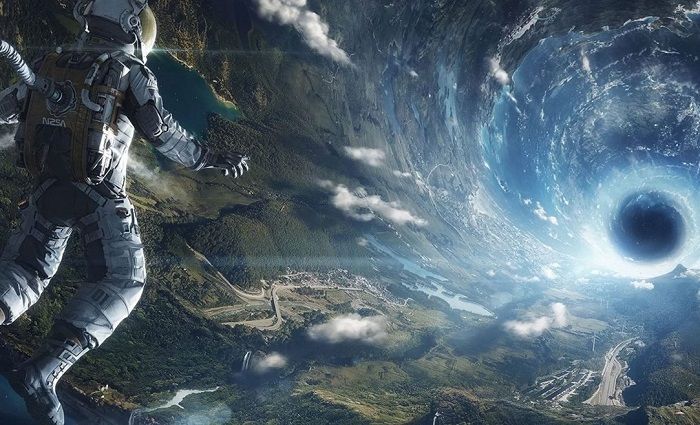Black Hole
Mar 29, 2019 • 47 views
A black hole is a region of a spacetime exhibiting such strong gravitational effects that nothing—not even particles and electromagnetic radiation such as light—can escape from inside it.

The boundary of this no-escape region is called the event horizon since distant observers outside the black hole cannot see events inside.No signal can propagate from inside a black hole, but the gravitational influence of a black hole is always present. (This influence does not propagate out of the hole; it is permanently present outside and depends only on the total amount of mass, angular momentum, and electric charge that have gone into forming the hole.) Black holes can be detected through the influence of this strong gravity on the surroundings just outside the hole. In this way, stellar mass holes produce detectable X-rays, supermassive black holes produce a wide spectrum of electromagnetic signals, and both types can be inferred from the orbital motion of luminous stars and matter around them. Phenomena involving black holes of any mass can produce strong gravitational waves and are of interest as sources for present and future gravitational wave detectors.
Something like a black hole exists within Newton's classical theory of gravity. In that theory, an energy argument tells us that there is an escape velocity vesc=2GM/R−−−−−−−√ from the surface of any spherical object of mass M and radius R . If this velocity is greater than the speed of light c then light from this object cannot escape to infinity. Thus the condition for such an "unseeable" object is R<2GM/c2.

In the classical theory, a particle could overcome this gravity with strong enough engines to provide the energy needed for escape. This is not so in general relativity, Einstein's theory of gravitation. In that theory, escaping the black hole is equivalent to moving faster than light, an impossibility in relativity.
To understand the relativistic black hole it is useful to think of space being dragged inward towards a gravitational center, at a faster rate near the center than far from it. The distance at which space is moving inward at the speed of light represents the location of the event horizon since no signal can progress outward through space faster than c. This comparison is more than a metaphor; black hole analog experiments with accelerating gas flows and other phenomena are being designed.

An important difference from Newton's theory is that Einstein's, and other relativistic theories of gravitation are nonlinear in the sense that gravitation (as well as mass) can be a source of gravity. Thus when a massive object collapses small enough, the tendency to continue the collapse and form a black hole can become unstoppable.
In the Newtonian theory, gravity is described by the potential Φ. Inside a spherical object, the form of Φ(r) depends on the interior structure, but in the vacuum outside matter, the potential −GM/r depends only on the interior mass. Similarly, in Einstein's theory the stationary (time-independent) spherically symmetric exterior solution, called the Schwarzschild spacetime, depends only on the mass of the interior object. If the interior object is small enough, then the Schwarzschild exterior extends to small enough radius that there is a horizon, a surface across which light cannot move outward. This horizon radius RH=2GM/c2 is, coincidentally, the same as the critical radius for "unseeable" objects in Newton's theory. (The meaning of "radius" as distance to the center is not straightforward for the Schwarzschild solution. Radius RHhere actually means that the area of the event horizon is 4πR2H .)
In Einstein's theory, the "exterior" solution can be taken to apply with no interior solution. In this case, it is gravity itself, rather than matter, that acts as the source of gravity. The inward-extended exterior solution does not reach a center, but rather is connected via a spacetime bridge to another universe, or another section of our own. For an astrophysical black hole, formed from the collapse of matter, a physical solution for the matter distribution replaces the pure vacuum Schwarzschild solution in the interior of the black hole. This physical solution lacks the spacetime bridge of ideal mathematical black holes but contains a central "singularity" where matter is compressed to infinite density. Very close to this singularity it is expected that the laws of general relativity will no longer apply, and as-yet-unknown laws of quantum gravity are needed.
A more general stationary black hole solution of Einstein's theory is the Kerr solution, a vacuum spacetime with both mass and angular momentum, and taken to represent a rotating black hole. In its pure mathematical form, the Kerr hole contains a spacetime bridge, but as in the case of the Schwarzschild black hole, this bridge is absent in realistic black holes that form by the collapse of matter.
Unlike the Schwarzschild spacetime, the Kerr solution is not the exterior spacetime of a material object with angular momentum. (In fact, no real solution has been found to join a Kerr exterior to a material interior.) The Kerr solution only becomes the exterior spacetime asymptotically at very late times after the collapse of an object.
Two other exact mathematical black hole solutions are the Reissner-Nordström spacetime, representing a hole with mass and electrical charge, and the Kerr-Newman spacetime, representing a hole with mass, electrical charge, and angular momentum. These spacetimes are not astrophysically relevant since astrophysical bodies have a negligible net electrical charge.
In the movie Interstellar, it was shown that if you fall into a black hole you can travel through time and get ahead in future or get back in the past.

According to scientist Stephen Hawkings, Black Hole may be a source to reach another galaxy. If you put it simply if you fall into a black hole you may get out from another black hole which opens in another galaxy but black holes are not often considered a thing for time travel because according to theory given ny Stephen Hawkings and Albert Einstien if you fall into a black hole at first time will slow down for you, secondly after some time your body will start to get stretchy because of the heavy gravitational pull which doesn't let the light escape will reap you apart.

Maybe black holes are some kind of space thing which helps you to reach another galaxy or maybe it's just a death trap.
So what do you guys think is it really a doorway opening to another galaxy or it's a big black thing which eats everything and does not let anything escape from it ??
